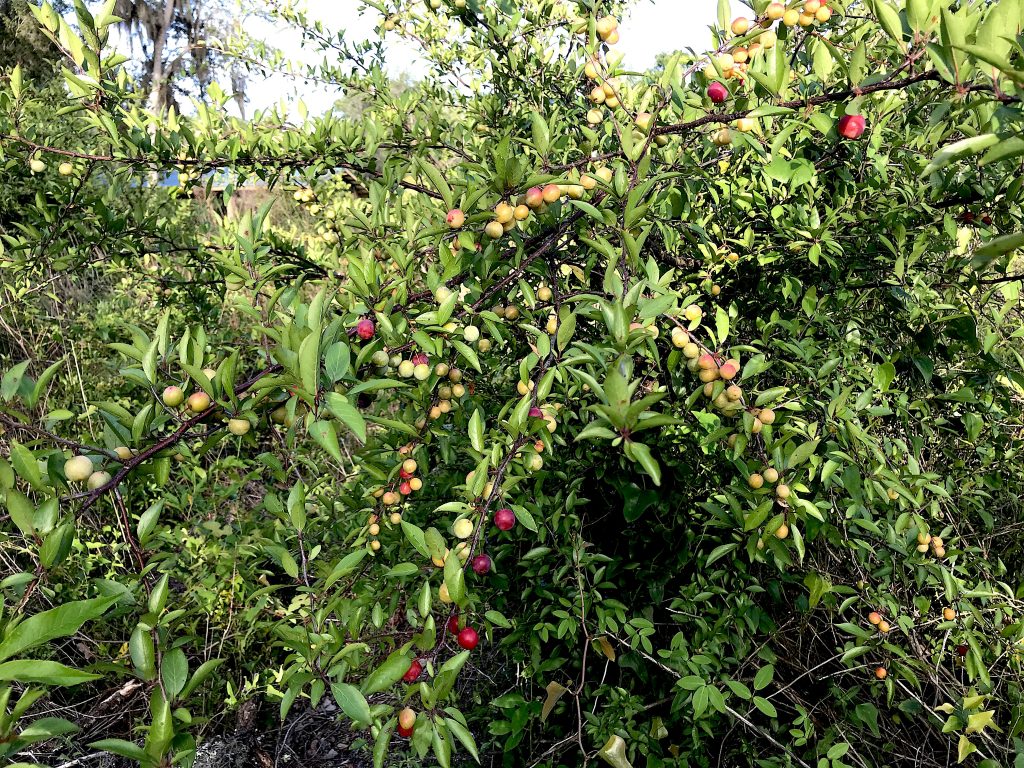
Chickasaw Plums are ripening. Photo by Green Deane
As the fourth of July approaches, so too is the ripening of Chickasaw plums. (Prunus angustifolia) Usually it can be hard to find any Chickasaw plums after the 4th of July. What you might think are unripe holdouts are usually Flatwood plums (Prunus umbellata) which never seem to ripen, even by the fall. Native to Oklahoma the Chickasaw plum is a wild species that takes well to domestication, happily producing large fruit (for its size) and easily will build a stand of trees. The ripest ones are usually on the ground, so look down.

The toxic Atamasco lily is prettying lawns now. Photo by Green Deane
Rains have brought out the toxic Atamasco Lily, (Zephyranthes atamasca) often seen in old lawns where is was once a favored ornamental native called Rain Lily. You can find it in other acidic places such as the wide north shoulder of State Road 60 in Polk county east of Nicholes Road no doubt remaining from when old homes made way for the road’s widening to two lanes. In bloom this lily is easy to identify, the rest of the time it looks like a wild onion or Garlic (but no necessary aroma.) Atamasca is Powhatan meaning “stained with red.” While no specific single toxin has been identified the Zephyranthes species contain phenanthridine alkaloids including lycorine, galantine, and tazettine, which can cause vomiting, diarrhea, convulsions, and death in humans and other animals, particularly dogs and cat which will nibble the Atamosco lily. The plant is exceptionally bitter so accidental human poisonings are rare.
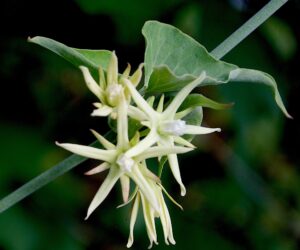
Latex Strangler Vine Blosssom, photo by Green Deane
Also Blossoming now is the Latex Strangler Vine, so you might be able to find it with your nose — it has an intense vanilla aroma. The bane of citrus growers for decades, it was originally called Morrenia odorata but recently was changed to Arajia odorata. At least the Species name odorata was kept reflecting the blossoms’ intense aroma. While the blossoms, leaves and fruit are edible the fruit is most often consumed and is exceptionally high in vitamin C, far more than oranges. It is a staple wild food in Central America. Its history in Florida has been sporadic being “discovered” twice. It fruit as far north as Ocala. Look for it around or in current or old citrus groves areas. It was called Latex Strangler Vine because it would grow on and shade out citrus trees killing them.

Latex Strangler Vine fruit, Photo by Green Deane
Three native tribes eat the flowers raw. Sometimes they boil the vanilla-scented flowers, squeeze out the extra water, then mix them with oil. One group pounds the flowers and young leaves in a mortar with a little water and salt, making a salad. Three groups eat the leaves raw, another takes the leaves and the young shoot ends and make them into a crown shape. They boil it in a pan. Then the ring is drained and eaten dipped in oil. Two groups form the raw leaves, stalks and flowers into a bunch to use to absorb a preparation made of salt, wild pepper (Capsicum chacoense) and water. The bunch is dipped in the liquid and sucked until the liquid is gone. The ripe fruit is used like a vegetable. It is dark green about the size of a tennis ball and has a large wrinkle on the bottom. Boiled for some 20 minutes they taste like a zuccini potato cross. They can also be roasted.
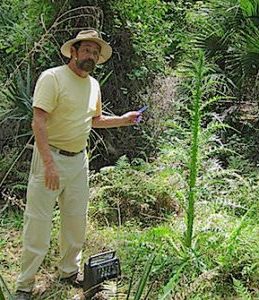
Foraging classes are held rain, shine, hot or cold. Photo by Nermina Krenata
Foraging classes: It is a difficult time of year to schedule classes because of tropical storms and wayward bans of rain.
Saturday, July 6th, Blanchard Park, 2451 Dean Rd, Union Park, FL 32817, meet by the tennis courts. 9 a.m. to noon.
Sunday, July 7th, John Chestnut County Park: 2200 East Lake Road, Palm Harbor, FL 34685. Meet at the trail head of the Peggy Park Nature Walk, pavilion 1 parking lot, 9 a.m. to noon.
Saturday, July 13th, Mead Garden: 1500 S. Denning Dr., Winter Park, FL 32789. Meet at the bathrooms. 9 a.m. to noon.
Sunday, July 14th, Bayshore Live Oak Park, Bayshore Drive. Port Charlotte, Meet at Bayrhore and Ganyard Street. 9 a.m. to noon.
Saturday, July 20th, Spruce Creek Park, 6250 Ridgewood Ave. Port Orange. Meet at the pavilion , 9 a.m. to noon.
Sunday, July 21st, Wickham Park: 2500 Parkway Drive, Melbourne, meet at the dog park. 9 a.m. to noon.
For more information on these classes, to prepay or sign up go here. The cost is $30 per adult (the class is usually three hours long and examines five-dozen or so species.) If cost is a hardship email me at: GreenDeane@gmail.com.
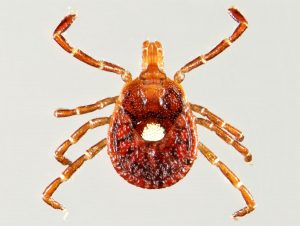
The female Lonestar tick has a white spot, the slightly larger male does not.
It had to happen sometime... In March I got my second Lonestar tick bite this time at Princess Place, and it conferred the Alpha Gal Syndrome, which is a potentially life-threatening allergic reaction to mammalian meat (and by-products such as jello and clear medicine capsules.) It takes two or three months for the condition to manifest itself, and then symptoms four to six hours after eating mammalian protein (such as beef, lamb, pork, deer, goat, squirrel cow’s milk, yogurt, et cetera.) So far my reactions have not been anaphylaxis shock though it is possible. I get severe headaches and become very tired. I seem to be able control the allergic response with two doses of .25mm of benadryl, one at the time of ingestion and one three hours later. I will get an epipen for unexpected reactions.

Green Deane Forum
Tired of Facebook and want to identify a plant? The Green Dean Forum is up and running again. Have you come to dislike Facebook, then join us on the forum. Perhaps you’re looking for a foraging reference? You might have a UFO, an Unidentified Flowering Object, you want identified. On the Green Deane Forum we — including Green Deane and others from around the world — chat about foraging all year. And it’s not just about warm-weather plants or just North American flora. Many nations share common weeds so there’s a lot to talk. There’s also more than weeds. The reference section has information for foraging around the world. There are also articles on food preservation, and forgotten skills from

You get the USB, not the key.
172-video USB would be a good end of spring present and is now $99. My nine-DVD set of 135 videos has been phased out. The USB videos are the same videos I have on You Tube. Some people like to have their own copy. Most of the 172 USB videos have to be copied to your computer to play. If you want to order the USB go to the DVD/USB order button on the top right of this page. That will take you to an order form.
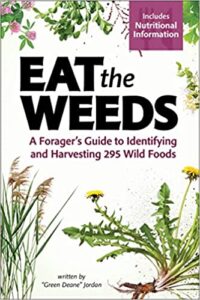
Now in second printing.
EAT THE WEEDS, the book,274 plants, 367 pages, index, nutrition charts and color photos. It’s available in many locations including Amazon. Most of the entries include a nutritional profile. It can also be ordered through AdventureKeen Publishing.
This is weekly newsletter #604. If you want to subscribe to this free newsletter you can find the sign-up form in the menu at the top of the page.
To donate to the Green Deane Newsletter click here.


Take care of yourself. Hopefully, this syndrome will end and you will get fully better.